To hate something is a learned disfunction, a reflection of cultural prejudice. This bias applies to many species we share our planet with, and if you add money to the equation, things get worse.
Just look at the pesticide shelf in your local garden centre. The same establishment that sells slug pellets is also the purveyor of hedgehog houses and bird tables. It’s easier to have sympathy for things that remind us of ourselves and, in this case, warm-blooded species win over ‘nasty’, slimy things.
Obviously, it’s not that simple. Nothing ecological is simple. None of us exist in isolation and we are all linked in the great interconnectedness of things. Plants, too, suffer from our twisted logic and those species we call weeds are top of the list of ‘triffids’ at which we throw all our misplaced pesticidal might.
Garden centres sell wildflower mixes, and get on the ‘eco-bandwagon’ by labelling pollinator-friendly plants, but turn around and you’re faced with shelves of weed-bashing implements and poisons – mixed messages? I think so. On one hand, we bemoan the loss of bees and butterflies and romanticise the good old days, while at the same time sloshing around the glyphosate.
To immerse ourselves in the world of tough plants that have the audacity to survive and thrive, is to take a journey of understanding into the thickets of thought. Let’s challenge the Victorian ideal of needing to hold dominion over nature (let’s face it, it hasn’t got us very far, has it?) and hang up our established views.
As a child, I fell for this cultural indoctrination at first. I remember brandishing sticks and going on nettle-bashing safaris. Then I found out that things lived in these nettle patches. I saw a fox slink off into them, well-worn paths snaked into their depths.

Once, peering into one of these green capillaries, my gaze was met by a stoat with its mouth full of rabbit. Then there were the caterpillars – while not to everyone’s taste, these pin-striped tortoiseshell and star-spangled peacock larvae were every bit as fascinating as their better known, flouncy parents.
Where there’s a patch of weeds, there will be stories to tell. A rich collection of cultural tomes, a gallery of visual feasts and a bestiary beyond your wildest imagination. It is in these tangled banks that real wild complexity still lurks.
Five common weeds and why they are good for wildlife
Dandelion (Taraxacum officinale)
A familiar sight in gardens, parks and on roadside verges. Flowers peak from March to May but can be seen throughout the year. Dandelions often self-seed within lawns, and the ‘clock’ seed heads enable this species to quickly multiple. Dandelions are a source of nectar for pollinators including bees and beetles, and offer spring colour.
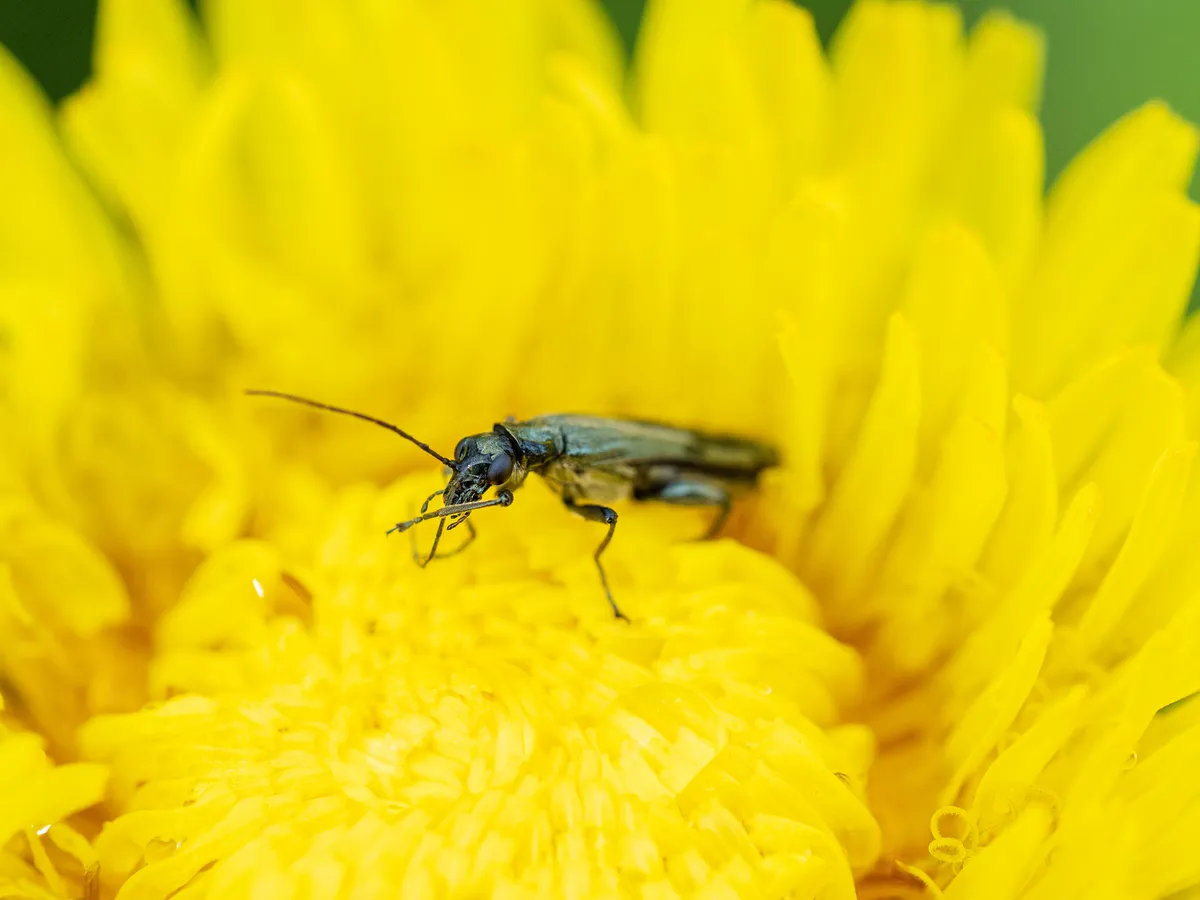
Do you want to do your bit to help reverse the decline in pollinators, such as bees? Then be less hasty with your lawnmower in the spring. Abstaining with the blades allows a bounty of blooms for early-season pollinators.
The common dandelion has been sitting there all winter. A thick taproot, acting like a battery pack, enables this plant to shoot its flowers up and out of the central rosette of leaves, beating many other flowers to the pollen and nectar market. As a weed, they are effective – able to colonise any open ground quickly and regenerate from even a tiny piece of taproot.
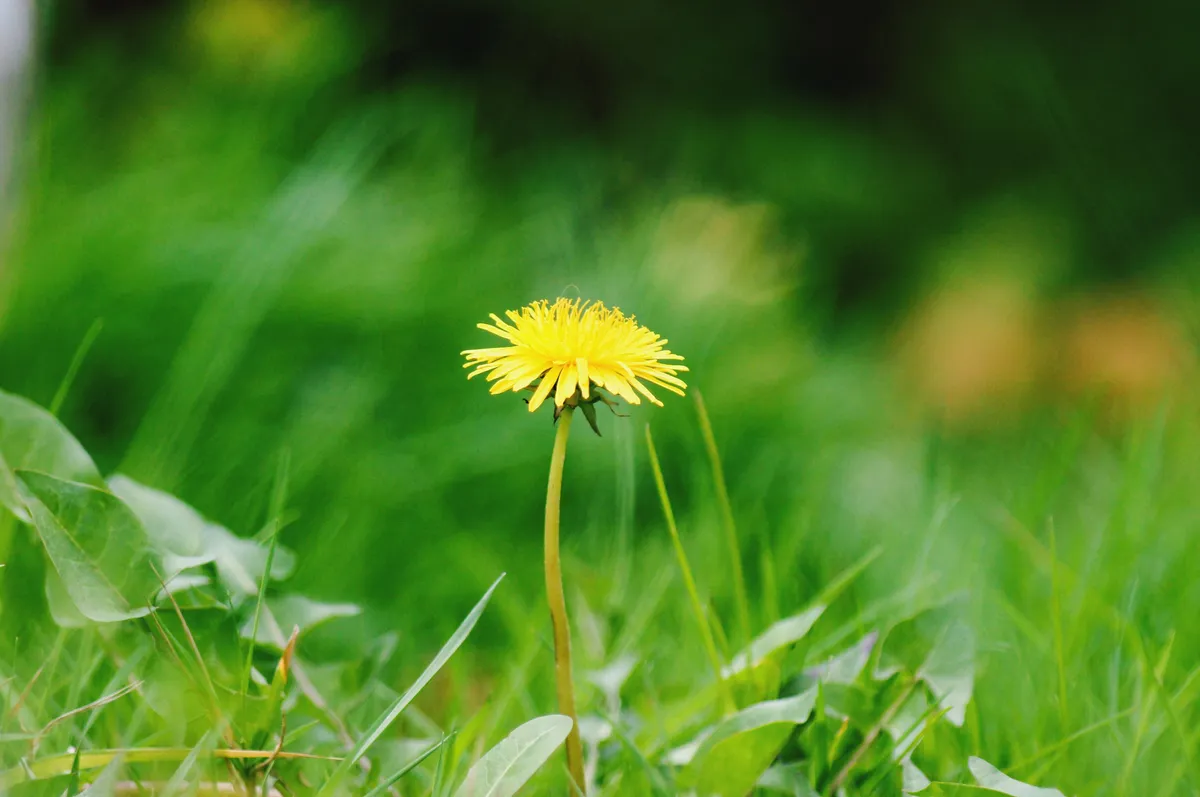
It is this omnipresence that makes them such a reliable source of nectar and pollen. The main flush is in early spring, when they turn the verges into strips of golden sunshine, but not a month exists when there won’t be some dandelion flowers in bloom somewhere.
While the pollen is often cited as being lower in proteins than is useful to bees, this is referring to our domestic honeybees. It is, however, one of the top-rated nectar producers of any wildflower, and many of our early-season bees – solitary mining and mason bees, for example – thrive on the stuff. Just spend a bit of time peering into each flowerhead and you’ll see hundreds of tiny beetles and flies as well.
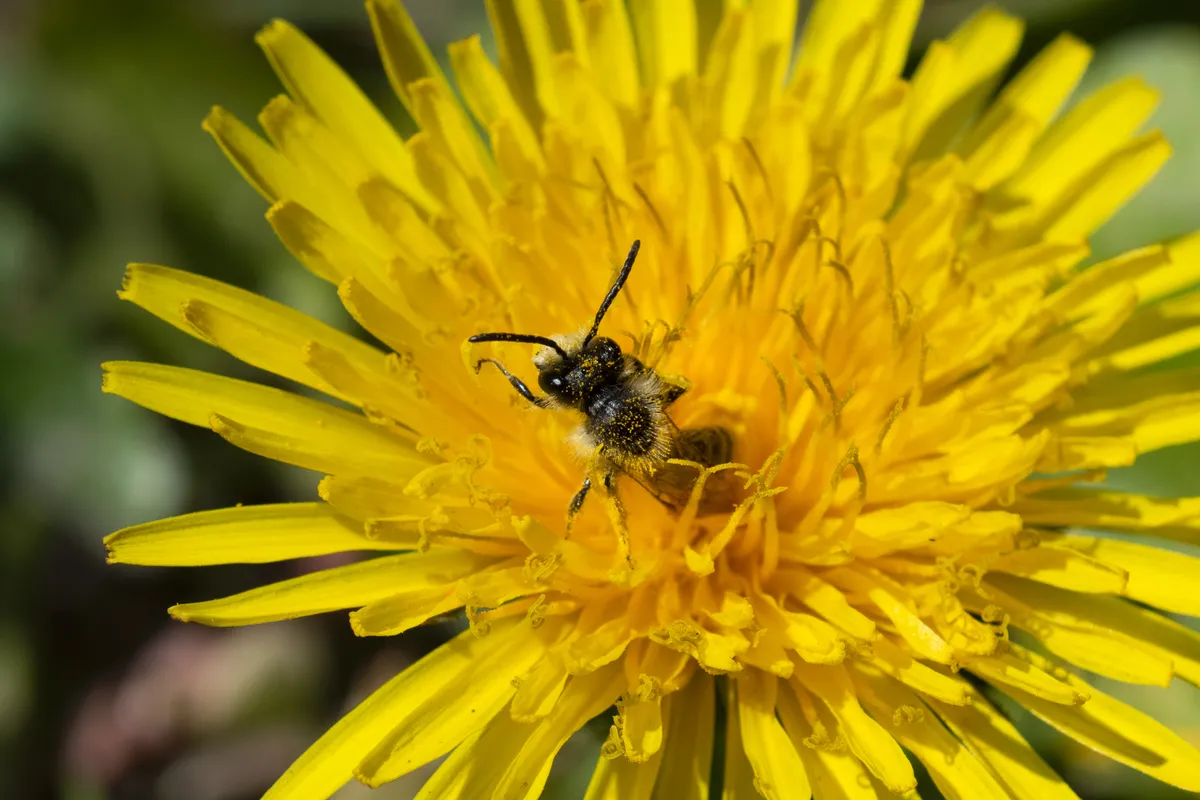
The plant’s effectiveness as a ‘weed’ is also down to its ability to produce many far-travelling seeds. The seed head, that familiar ‘clock’, is lifted still higher after flowering by a quickly growing stem, ensuring that the 135–300 seeds will be sure to catch the breeze.
Dandelions are also popular with foragers, as they are very versatile plants that can be used in a variety of ways. Young leaves can be added to salads and turned into pesto, the roots can be used to make an alternative to coffee, and there's a huge range of uses for the bright yellow flowerheads, from using them to make to tea, syrup or wine, to frying them in batter.
Foraging recipes using dandelions:
Ivy (Hedera helix)
Common in a wide range of habitats. Flowers bloom from September to November and berries remain into spring. Ivy is able to cling on to most surfaces, including brickwork, and can become much woodier as it matures. The unusual-looking umbels (arrangement of the flowers) of ivy attract hoverflies, bees, and wasps.
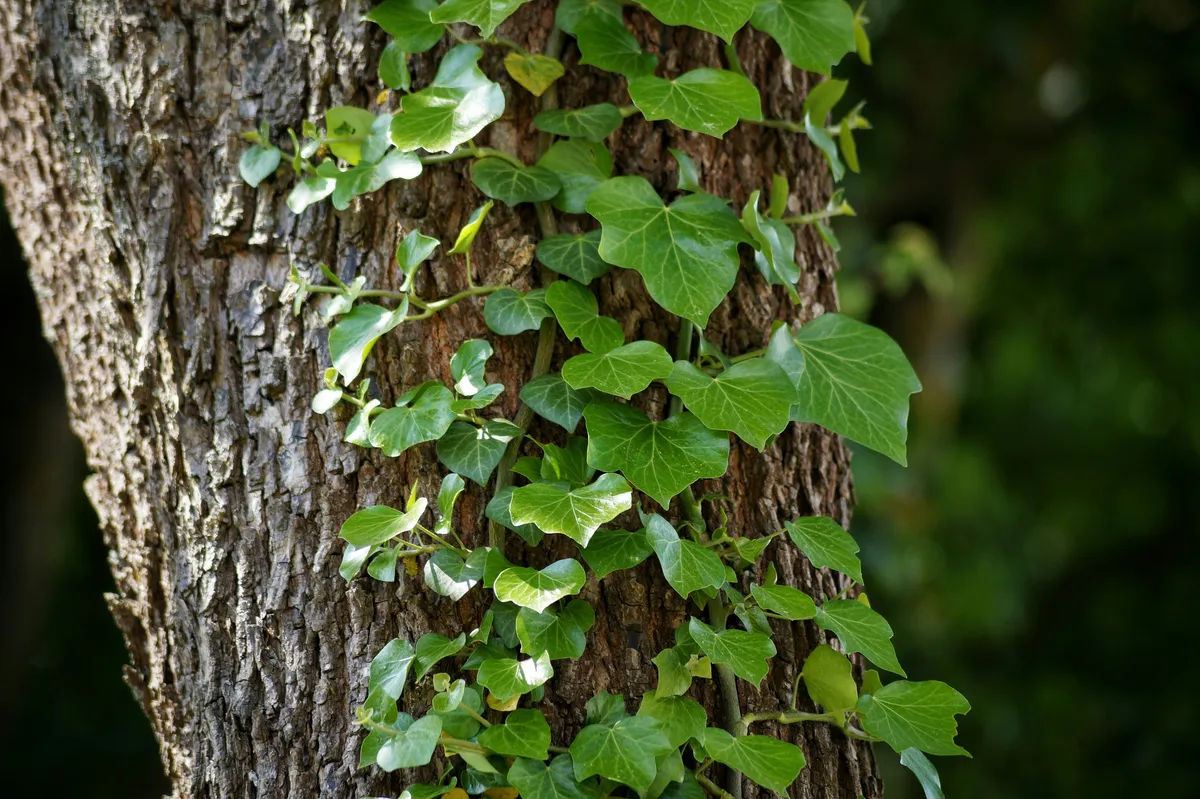
Often blamed for parasitising and weakening trees, and pulling down buildings, this plant’s virtues far outweigh the negatives. Like all weed species, it is very adaptable. It starts life as a seed and quickly heads for the light, clambering upwards and holding its spot with the help of thousands of tiny rootlets from which grow root hairs that grip at a nano-level, secreting a glue-like substance. They are superbly effective, but do not actually enter the tissue of the tree they’re climbing.
When the ivy hits its lofty destination, the leaves change from the iconic palmate form to a simpler shape. They also tend to be paler, as, at height, there is more light and so less green chloroplasts are needed to produce energy. Only when it is mature will ivy flower.

Ivy is an excellent source of late-season nectar, too. In a sunny spot, the flowers will heave with numerous bees, hoverflies and butterflies. There is even a bee species, the ivy bee, that bases its entire life-cycle around this bounty. Plus, the thick tangle of stems creates shelter for nesting birds and mammals.
But its value doesn’t end as the flowers fade in November. These starry umbels then give rise to a crop of dark berries – a popular food with many birds throughout the sparse winter months into spring. Blackbirds, woodpigeons and over-wintering blackcaps all famously gorge themselves. The leaves themselves are eaten by browsers, such as deer, while it is also an important food plant for the swallow-tailed moth and the holly blue butterfly.

Ragwort (Jacobaea vulgaris)
Found countrywide in hedgerows, pastures and on disturbed land. Flowers appear from June and bloom until as late as November. The leaves are devoured by cinnabar moth caterpillars, easily identified by their contrasting orange and black stripes, and a wide range of pollinators feed from the flowers.

Common ragwort brings much needed pizzazz to the tired visage of late summer. When other blooms have withered, it is the enduring king of the hedgerow and pasture or paddock edge, or just about any other forgotten corner.
It’s a flower that ‘gladdened’ poet John Clare’s heart – he loved to ‘see thee come and litter gold’. However, nowadays, society’s disconnection with nature and lack of ecological savvy is epitomised by our view of ragwort. Common sense, it seems, has left us, and ragwort has become the ‘horse killer’.
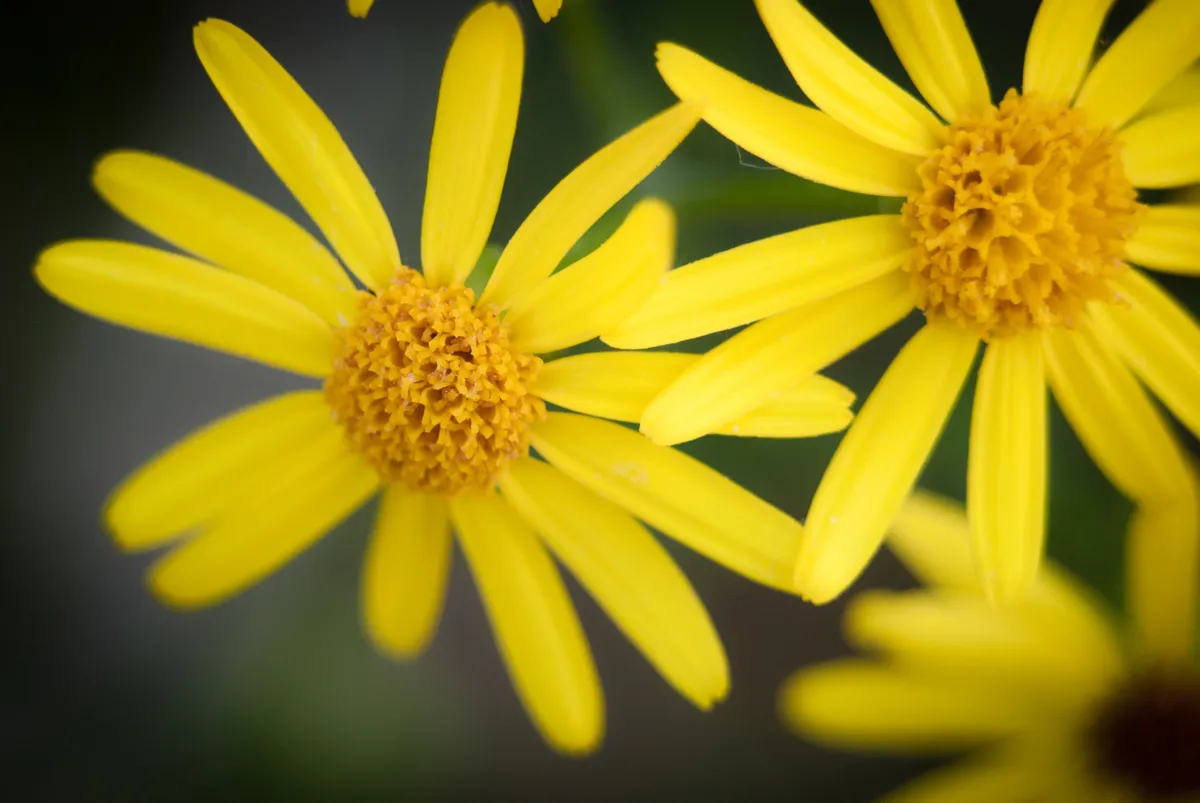
It is true that it contains toxic substances and, if ingested in sufficient quantities, can cause liver damage and even death. But the reality is that the same can be said of many other common plants and fungi. The plant’s built-in warning system – an unpleasant smell alluding to its bitter taste – does a good job of keeping grazing animals at bay.
Unfortunately, the potential for trouble comes when the leaves are dead and withered. In this state, livestock cannot detect it as effectively, and it can be ingested. The risk is, therefore, when dead plants are left and find their way into fodder.
But this is a plant that is sought after by many species of nectar-thirsty insects – over 177 different species have been recorded supping up ragwort’s sacchariferous bounty. Buglife has also found that the leaves of ragwort are dinner to many species of beetle, fly, mite and moth – some 62 species, in all. Over half of which feed on nothing else.

Nettle (Urtica dioica)
Fond of damp, nitrogen-rich soil in cultivated ground, woodland and pastures. The catkin-like flowers of nettles appear from May to August. The caterpillars of many butterfly and moth species feed on nettles, including peacock butterflies (pictured below), and garden tiger moths.

Nettles have a long cultural history and many famous benefits, from fibres to food. However, its use in these traditional ways has waned and its once positive qualities have been swamped by the negative.
Firstly, it does as its name suggests – it stings. Look closely and you will see a felt of bristles and hairs clothing the distinctive furrowed and pleated leaves, and the stems. They also make excellent colonisers of abandoned ground, due to their fecundity.
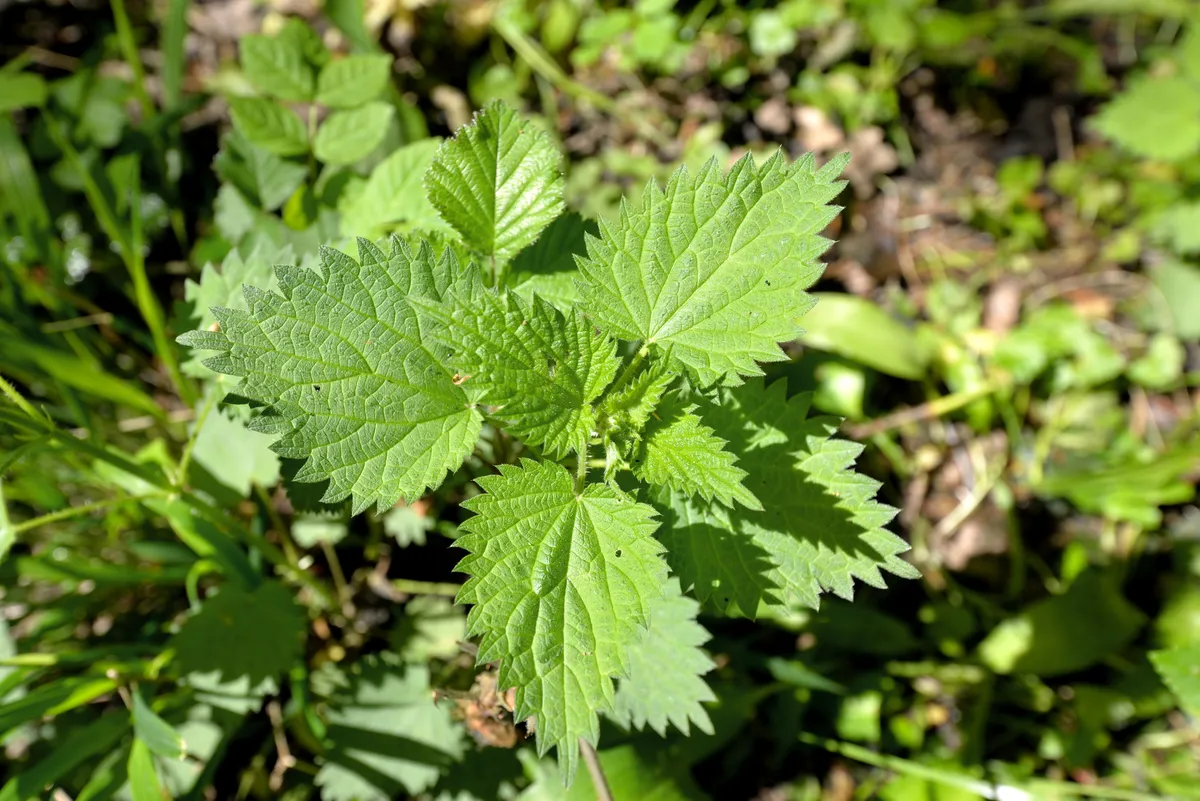
Each female stem (males are on separate plants, hence the name dioica, which means ‘two houses’) makes 500–20,000 seeds, and the plant is able to spread via a network of fast-creeping and highly distinctive yellow roots and stolons, too.
But, as a wildlife reserve in miniature, a clump of nettles is hard to beat. Over 40 kinds of insect are unaffected by the barricade of pain afforded to other creatures. Instead, they benefit from its protection. Moths, such as the burnished brass, spectacle and garden tiger, as well as some of the brightest of our butterflies – red admiral, small tortoiseshell, comma and peacock – all lay their eggs on the freshest growth. Nettles also provide a curtain of secrecy, and many animals hide in their depths.

The seeds of nettles are themselves a food source for many birds late in the season, while clouds of aphids that give way to sap-sucking herds are in turn picked on by many insectivorous birds, and hoovered up by hoverflies and ladybirds.
Despite the hairs, nettle leaves can be used in a range of foraging recipes – the cooking process actually breaks down the hairs, making the leaves safe to eat.
Foraging recipes using nettles:
Bramble (Rubus fruiticosus)
Widespread and seen in a variety of habitats, especially hedgerows. Small, rose-like flowers bloom throughout the summer months. Many mammals, such as wood mice, will feed on blackberries.
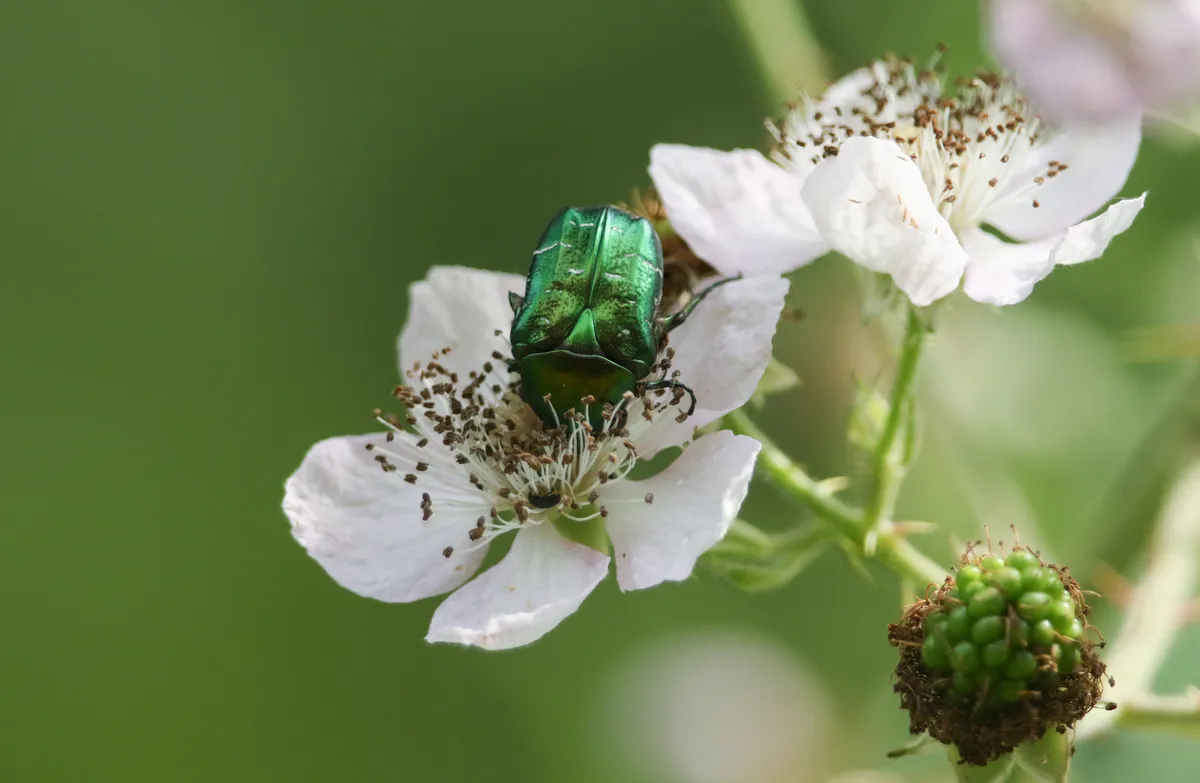
There are over 400 described microspecies of bramble in the UK alone – each varying in the size and shape of leaf, growth habit and fruit. So rich and complex is the world of the common blackberry plant, that the study of it has its own word: batology. It’s a plant we tend to love and hate in equal measure, depending on context.
The recurved thorns that arm its arching stems – serving as both a defense against browsers and as ‘grappling hooks’ – are the main reason for animosity. However, they serve to protect more than the plant itself – they also act as a nursery for saplings, protecting them from the predations of browsing herbivores, such as deer, while also holding the nests of plenty of species of bird and mammal safe in their thorny arms.
Highly palatable leaves, many of which remain through the winter months, are a vital salad to several species – from roe deer to bramble-mining moths, which leave wandering spirograph-like patterns.
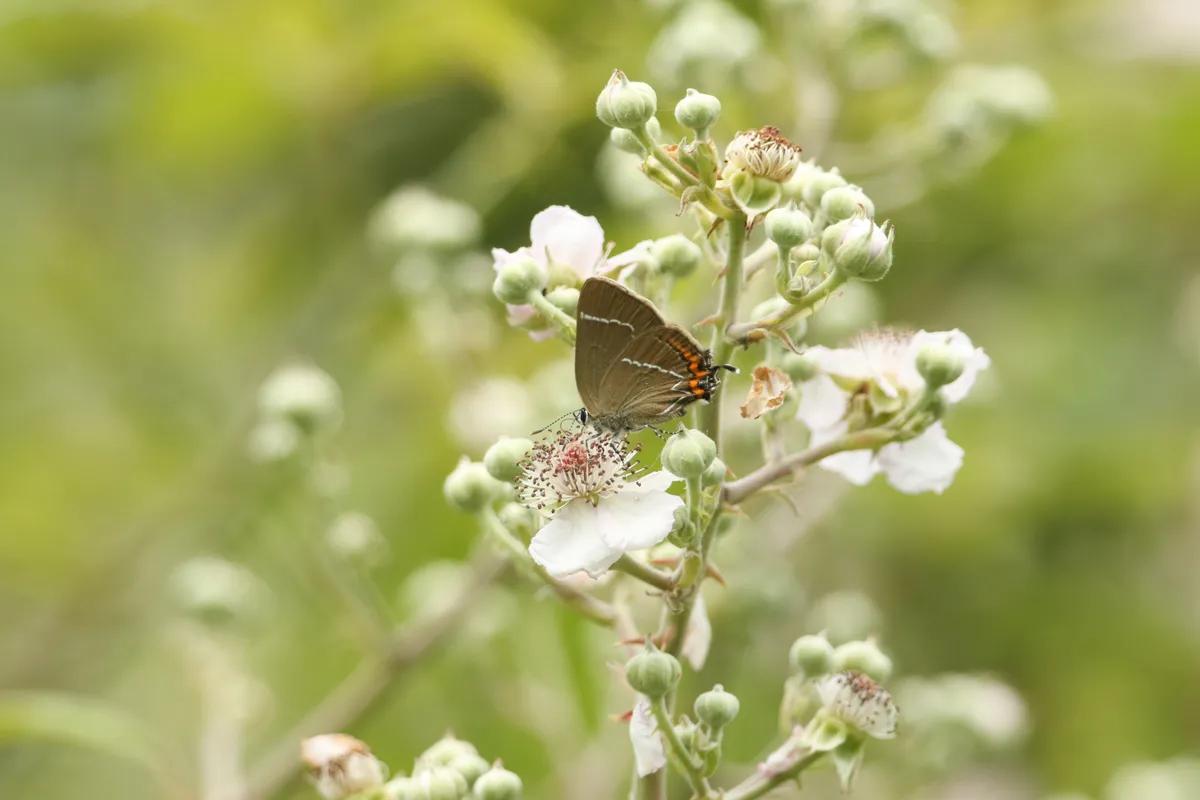
The flowers are popular with a range of pollinators including butterflies, moths, and beetles.
A reason that lots of us can’t totally turn against it is the fruits — or, more accurately, the ‘drupes’. Each one is actually a cluster of up to 50 individual ‘black berries’, called drupelets, which contain a tiny seed (the ones that get stuck between your teeth).
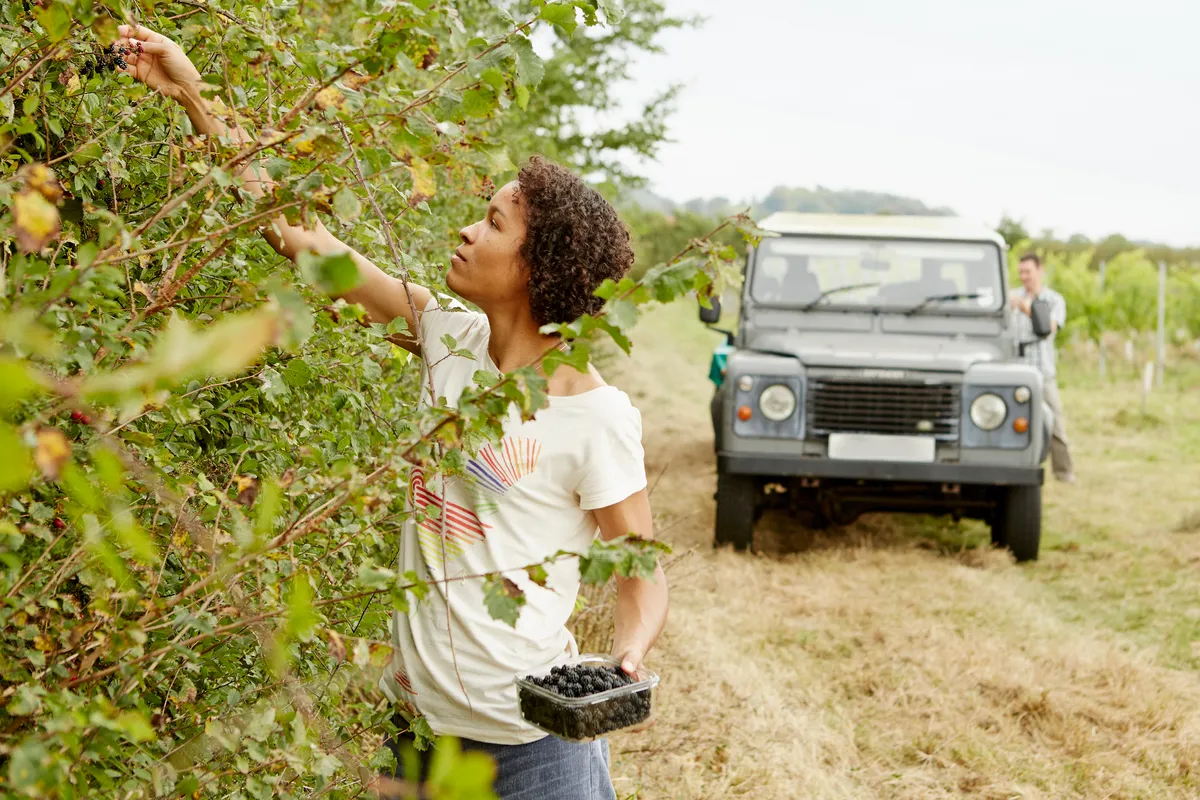
These sugar-and-vitamin parcels are the justification behind the only wild food foraging many of us do – the annual sport of ‘blackberrying’. As well as a bounty for many birds and insects, badgers and foxes can over indulge in this seasonal bounty – as evidenced by the vast quantities of purple poo visible during the late summer months.
Foraging recipes using blackberries:
Main image: A solitary bee feeding from a dandelion flower. © Ilona Kryzhanivska/500px/Getty
